Notice: Undefined variable: echo in /var/www/kabazoo/data/www/spark.crisp-studio.com/wp-content/themes/SparkSales_Final/header.php on line 140
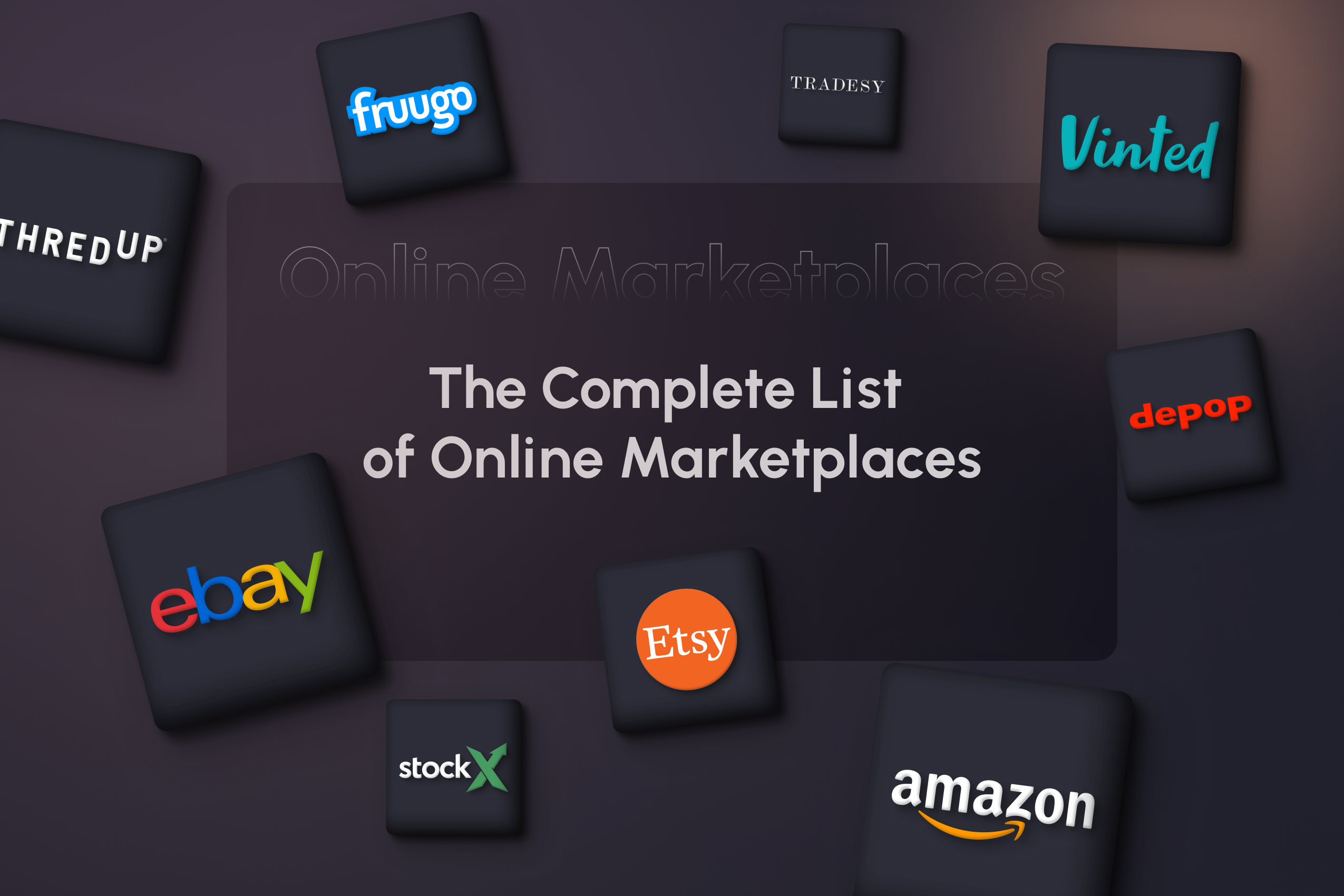
So today, I want to talk about different online marketplaces. One question that comes up frequently is, “Okay, I sell on Amazon; what other marketplaces are there out there? How many of them are there? And is it worth my time to invest in them?” We’re going to cover all of that today. I will break down a whole lot of marketplaces and list them in a level-based system.
Level one are the ones that you want to be on right now. Level two are the ones where you probably want to list and play around with a little bit, and level three are up and coming but are not necessarily worth allocating a lot of your time just yet. However, they’re still ones that you want to keep an eye on for the future.
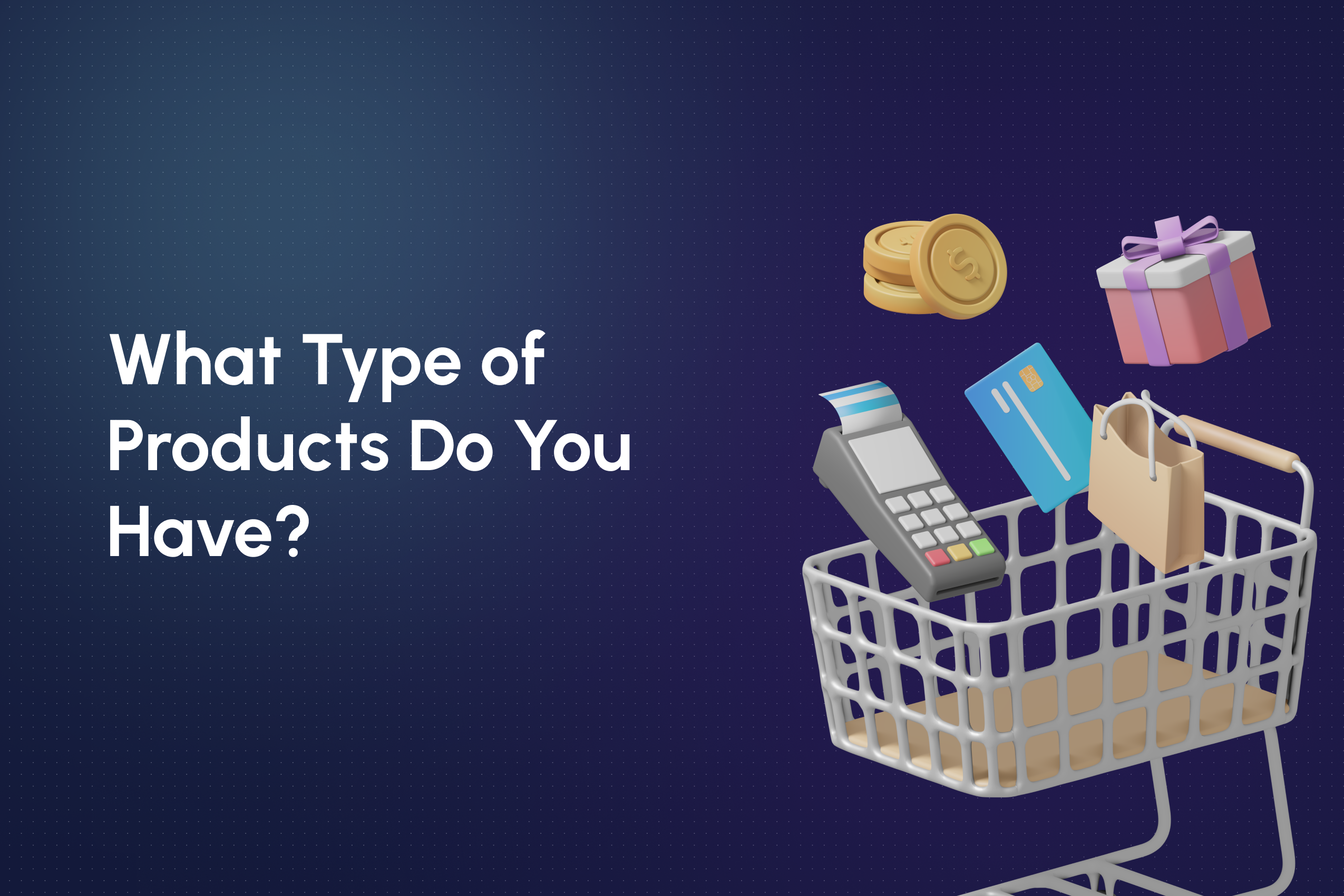
Regardless of whether you’re reselling, creating your own products, or selling in general, you need to understand what type of products you have and where it would be best for you to sell them.
Unfortunately, the answer is not always Amazon, even though Amazon is an enormous marketplace with a high sales velocity for many different things (sales velocity is the evaluation of how soon an item is sold).
So you want to understand what type of products you have and where you can list them in order for them to sell quickly and produce the highest profit margins.
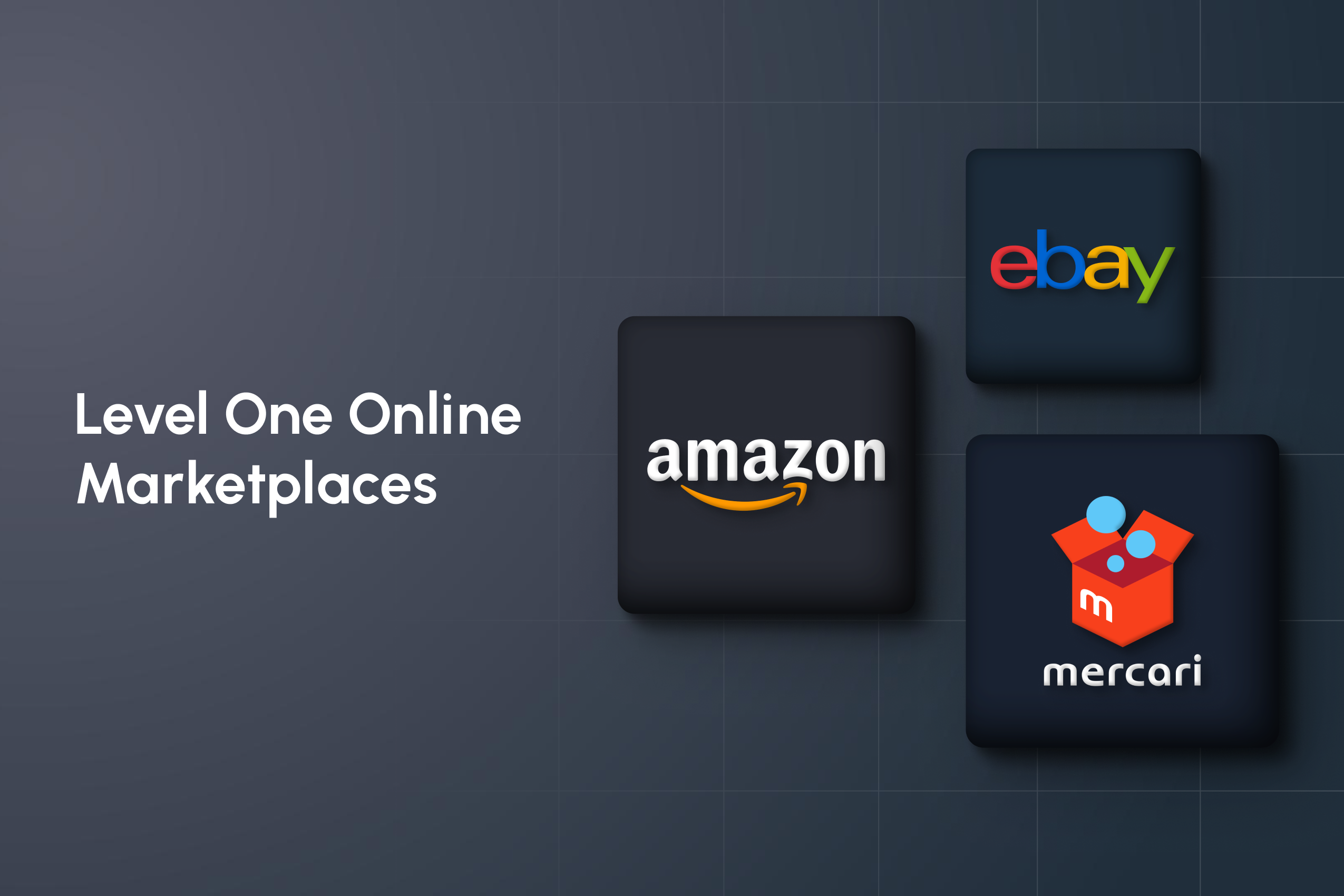
In level one, there are four leading marketplaces that you can sell on. So obviously, first and foremost, we have Amazon.
Now with Amazon, there are product listings that rank for specific sales velocities. So you can get the indicators of this with software like Jungle Scout or Viral Launch or simply by looking at the best seller rank on that actual product listing.
Selling on an already existing Amazon listing may generate more traffic to the listing, but not necessarily to you as a seller because you may be competing with a lot of other sellers.
Many brands start on Amazon from scratch and create new listings that never existed before and become successful Amazon sellers.
Becoming a brand on Amazon is what everyone is chasing because this prevents you from competition on your listings and all traffic becomes yours.
Amazon is pretty self-explanatory, and it is the best marketplace to sell on in terms of traffic and buyers, as long as you have the right products.
eBay is an excellent marketplace partly because it has 187 million global users, and you can sell a lot of things that you wouldn’t otherwise be able to sell on Amazon. Often, if you list something on Amazon with high sales numbers, a product like that will have similar demand on eBay, not necessarily the same. But, still, it’s going to be high on eBay as well.
Although sometimes you’ll notice that some products sell better on Amazon and some sell better on eBay, it depends on the product. That’s why it’s crucial to do your product research.
If you have eBay at your disposal on top of Amazon, you should utilise that and grow eBay because it’s one of the best places to sell online. That said, if Poshmark is available in your country, then it’s wise to scale that up too.
Poshmark’s a great place, and they are starting to expand into new countries all the time. For example, they just launched in Canada. I believe they will be developing their presence in Mexico, and they also have plans to break into Europe in the future.
Not only that, though, they’re also increasing their product categories. So it’s similar to how Amazon started when they were just an online book retailer. Well, Poshmark started with just clothes, and now they’re slowly branching out into other categories too. Therefore this is not just a site to resell clothes anymore. It started that way, but it will likely grow and grow exponentially in the years to come.
Mercari is also a great place to list things. But, unfortunately, it’s currently only available in Japan and the US. One of the benefits of Mercari is that it’s like a baby version of eBay. It’s growing into that, and I highly recommend that you start selling on Mercari if you can, even if you don’t invest all of your time on it to begin with.
Start listing some things on the platform, and you will see just how easily they sell and how willing buyers are to buy items at higher prices than the more significant marketplaces.
So if you’re not already, get on eBay, Poshmark and Mercari because these are three of the other marketplaces besides Amazon that you should be investing your time in right now. That way, you can profit from them in the future, but what other marketplaces can you list products on that might be worth your time?
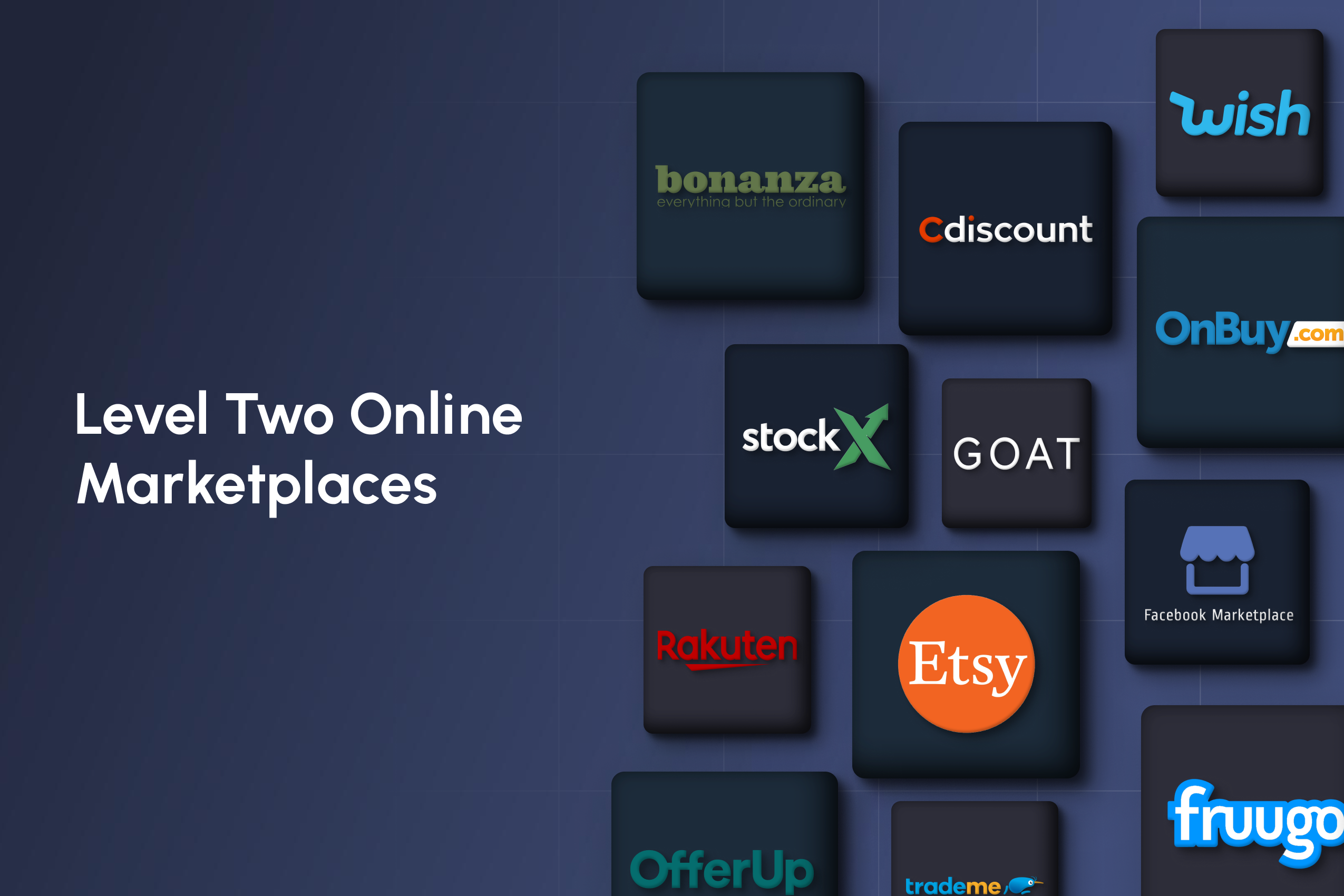
These are marketplaces that are not as popular as those previously mentioned, but if you list something on them, you know that you can still get sales consistently and make good money.
So Letgo and OfferUp are two great ones. In 2020 OfferUp acquired Letgo and integrated the Letgo marketplace with its application. After this merger, OfferUp now has more than 20 million monthly active users.
Both Letgo and OfferUp are super underrated. Now that they’ve become one, OfferUp is fantastic for proximity or heavy transactions, so it’s great if you have something bulky or heavy that would cost a lot to ship on a platform like eBay, Poshmark or Mercari.
Plus, if your item doesn’t have a product listing on Amazon, one of the best places to resell that item would be OfferUp because they connect you with buyers close to you.
So there are great benefits in that it connects you to nearby buyers. You can then flip heavy and bulky items for a profit. It’s one of the best places for beginners if they don’t have any money when starting up because they can go out and source free items on Offerup and then literally resell them back on the app if they’re willing to put the work in.
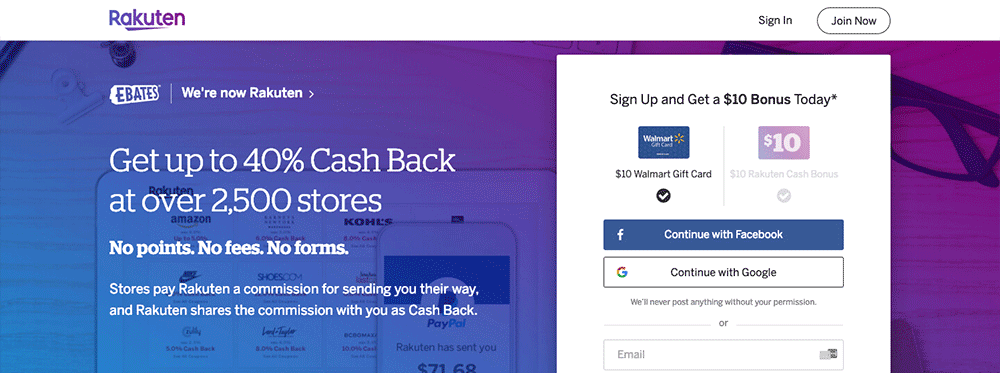
Rakuten was formerly known as buy.com, and one massive advantage of Rakuten is that you’re not competing with the platform itself. Now that’s different to Amazon, which sells many of its own brands on the platform, and it’s not unheard of that if you’re selling well in a specific niche, they might come up with their own brand to compete with you directly.
There are also some big names like Dell and Dyson that use Rakuten. However, it’s worth remembering that Rakuten is much more like Amazon than eBay because it’s more of a traditional online marketplace and not an auction platform.
The fees for selling on Rakuten are different than most other marketplaces, too, because you’re going to pay a monthly fee just to sell on their platform. Like with many other marketplaces, you then also pay a percentage for a category fee and a fee every time you sell an item.
The next one is Facebook Marketplace which is also great for proximity or heavy, bulky items. You can list almost anything on Facebook Marketplace, and many people are looking for things on there.
Although keep in mind, with Facebook Marketplace specifically, many people offer lowball offers, and it can be far more challenging to get the price point you’re after.
So if you have an item that you’re just trying to sell for whatever reason, maybe you bought Amazon returns, or you have liquidated stock that you’re just trying to make any money back on, then Facebook marketplace might be perfect for you.
Now Bonanza seems like an excellent up-and-comer for sellers as well, although it isn’t quite there yet, in my opinion. It does have decent sales velocity believe it or not, but what I would say is that it’s not a leading player just yet.
Let’s say that you have a few hundred listings across eBay, Poshmark and Mercari, but you do your main selling on Amazon. It is probably not wise to relist those couple of hundred items on Bonanza as well. The reason is twofold.
So first and foremost, they charge ahead of time, which can be off-putting with these types of marketplaces. Another marketplace that we’ll cover a little later that charges ahead of time is Etsy.
With these marketplaces, you pay to list something or pay a membership fee depending on what kind of membership you sign up for and what kind of seller you are. Many sellers do not like this kind of payment structure because they don’t want to invest their time and money just to find out if it’s a good, viable marketplace.
So Bonanza does seem like it’s got decent sales velocity. It does seem like it’s an excellent up-and-comer, and it might be there in a couple of years potentially, but it isn’t quite there yet; therefore, I wouldn’t recommend making it your go-to right now. Stick with those four in level one and then play around a little bit with listing on Bonanza and see how it works for you.
Wish is the sixth-largest ecommerce company in the world, with over 80 million active users.
There are no fees, and you only pay when you make a sale. Wish also have a warehousing and logistics service called Fulfilment by Wish.
On paper, it looks like a good platform for sellers, but it hasn’t reached its full potential at the moment. I’m sure you’ve seen ads for it online because they’re blowing up their brand across the internet in general, which is also an excellent sign for sellers.
I would recommend that you do the same as suggested with Bonanza and invest some of your time in a few listings, but as I said with Bonanza, don’t look to this as a guaranteed source of income.
Wish does seem like it’s a buoyant marketplace; it will be there in a year or two potentially, but not right now necessarily for sellers as a primary revenue stream. So you’re not going to make a full time living listing items on Wish, but it’s a good one to start building a reputation on.
Fruugo is a marketplace with over a million customers. Fruugo is growing steadily, and it offers an exciting opportunity for sellers looking for a new platform because there is a lot less competition than many other marketplaces.
Listing items is more straightforward with Fruugo than most online marketplaces because they integrate with other ecommerce platforms like Magento and Shopify.
While they don’t charge monthly or listing fees, they do charge a 15% commission on each sale, as well as a 2.35% funds processing fee.
To sell on Fruugo, you must ship internationally, and like all of the other platforms, they have an extensive list of products that you cannot sell on their marketplace.
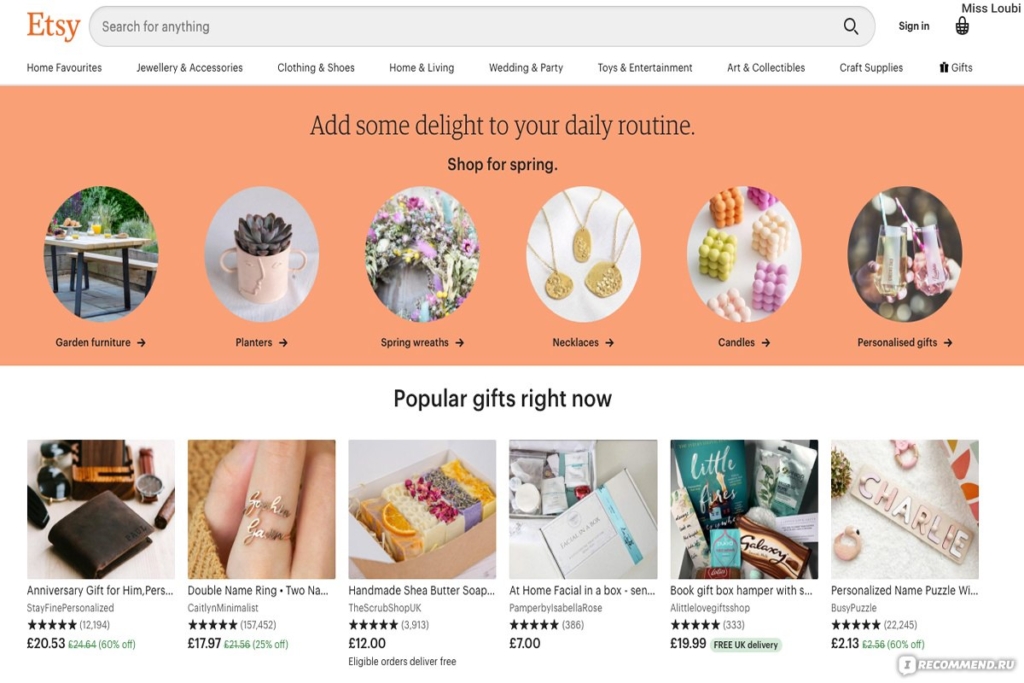
The next one is Etsy. Now Etsy is a great marketplace as well. It should probably be in level one with the other four; however, the reason it didn’t make the cut is that it’s for sellers who sell vintage, print on demand and handmade products, and so for that reason, I’ve put it in level two.
I’m assuming that most of you reading this will not be selling vintage or handmade products. In that case, it wouldn’t benefit you even if Etsy did have high sales velocity. If you’re not selling what you’re allowed to sell on the platform, it doesn’t make sense to list there at all. So remember that only vintage, print on demand and handmade products are allowed with Etsy.
There is no monthly membership fee to sell on their marketplace, but there is a charge of £0.15 per listing, and a 5% transaction fee is charged on each item sold and the shipping price you set.
So it’s not like eBay, Amazon, Poshmark and Mercari, where you can list for free, you have to pay ahead of time, and you’re only limited to vintage, print on demand and handmade products.
GOAT is an app strictly for reselling shoes, and on Stock X, you can sell shoes and collectables such as trainers, handbags, and watches. It seems like there’s a high demand on those apps with people looking for specific shoes.
However, it’s important to remember that it’s not all shoes. It’s only top brand name shoes, so if you have a leading brand and it’s new, chances are you can flip it on GOAT and Stock X for a decent margin. Therefore, keep in mind that they’re specialised marketplaces, and GOAT only allows a select group of sellers to sign up.
The Newegg marketplace is known mainly for electronics. It’s been around since the year 2000, and Newegg continues to be a powerful sales platform, with more than 10.5 million products listed. Sellers must apply to sell on the marketplace, but you have total control over your catalogue once you’re approved.
When it comes to fees, they take a cut of 10% for most products and pay sellers each week, which is refreshingly simple compared with some of the more complex payment structures of the other online marketplaces in our list.
OnBuy is located in Dorset in the UK, and it is considered more straightforward to use than both eBay and Amazon based on the seller experience. However, it is up there with the other fast-growing marketplaces with 8 million customers and millions of items, so OnBuy could be an excellent opportunity for UK based sellers or people who want to start selling online.
It would be best to make sure that you have plenty of products available for sale on OnBuy. The more products you have listed there, the better the chance of making the best return on your time investment. The fees are pretty reasonable at 5-9% too.
Another feature on OnBuy is that once you’ve listed your item, they allow you to ‘boost’ your products, like an advertising campaign on Amazon. However, their advertising system is a lot more straightforward and quick to set up than on Amazon.
Cdiscount is one of the most well-known ecommerce websites in France, and it has grown considerably over recent years with 20 million unique visitors every month.
Cdiscount allows sellers to sell under 40 categories and 2000 subcategories. As a result, it’s a great place for both new and old sellers to sell their products.
They also have a distribution network, with over 18,500 pick-up points throughout the country and a fulfilment service.
Back Market was created in 2014. It was one of the first platforms that allowed consumers to access hundreds of thousands of electrical and electronic products that certified professionals had refurbished.
More than a million products are available today on Back Market in twelve countries, Austria, Belgium, Finland, France, Germany, Greece, Ireland, Italy, Netherlands, Portugal, Slovakia, Spain, the UK, and the US.
Back Market’s vision was that there was a real need to democratise and organise the market for refurbished items and allow consumers peace of mind when buying a restored or repaired product. Therefore there are a lot of processes put in place for the experience to run smoothly.
Trade Me is another online marketplace, and it’s pretty much New Zealand’s version of eBay. When you’re first considering selling on Trade Me, I recommend starting by buying a few products before you begin to sell. This is so that you can get an idea of what it’s like from the other side and what the whole process entails. The fee structure on Trade Me is pretty fair, and for every item you sell, they’ll take a cut of 7.9%.
When it comes to writing your product descriptions, be clear about the condition of the item, reiterating whether it has to be picked up and the general whereabouts of the pick-up location, as well as your preferred payment option because some people don’t read all the way down the page to see all of the details.
A product description should not include too much or too little detail. Long descriptions with plenty of text blocks might bore customers, while brief explanations with little content can leave them wondering.
Also, don’t underestimate the power of good photography because if your image is blurry and has terrible lighting, people can easily be put off. In contrast, if you have a good picture, people are more likely to be attracted to the item, so that’s quite important as well.
A slight difference with Trade Me compared to the other online marketplaces is if you put something on Trade Me and regret it, they do have a withdrawal fee of $3.00 for you to remove it.
So that is level two and the first four in level one. Level two all require you to invest a little bit of your time playing around with them. One of them might just be a diamond in the rough for you. Play around with them, see if they work for you and use them as though they’re just another metaphorical tool in your tool belt.
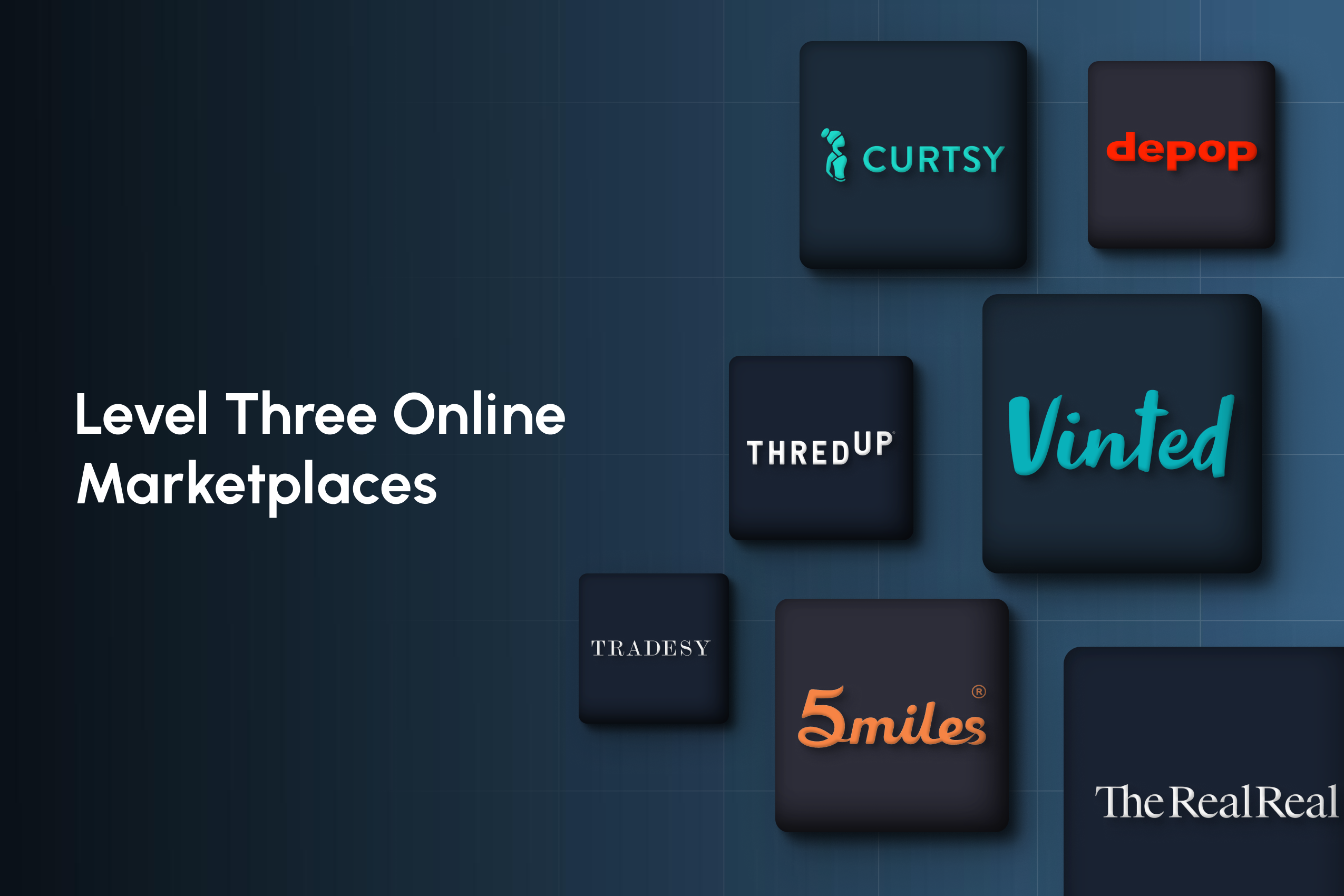
Level three online marketplaces are ones that, in my opinion, are not there yet, and you shouldn’t be investing time in them right now. Although they do seem promising, and you should plan on keeping an eye on them for the future. Level three consists of:
Keep in mind with Depop and Curtsy that you can only list from their app. So for people using listing software where it’s straightforward to take an Amazon listing and list it on eBay or take an Amazon listing and list it on Poshmark and Mercari, you can’t do that with Depop and Curtsy because you have to list from the app.
Many of these will only allow you to use pictures you’ve taken yourself too, so you can’t use stock photos, therefore keep that in mind.
So these are ones to have your eye on that might be up-and-comers for the future, but currently, it just doesn’t seem like there’s that much demand or sales velocity on these platforms.
Level one is Amazon, eBay, PoshMark and Mercari. It’s wise to focus on these online marketplaces first. Obviously, Amazon goes without saying, but eBay, Poshmark, and Mercari are super underrated in many sellers’ eyes. There is still a lot of potential on these platforms to make money.
In level two, we have OfferUp, Rakuten, Facebook Marketplace, Bonanza, Wish, Fruugo, Etsy, GOAT, Stock X, Newegg, OnBuy.com, Cdiscount, Back Market and Trade Me. These are great ones to start experimenting with.
In level three, we have thredUP, Tradesy, 5 Miles, Vinted, The RealReal, Depop and Curtsy. These are online marketplaces that are worth paying attention to, and you can try them out if you want to; just don’t invest too much of your time on these platforms because there doesn’t seem like there are many buyers on them currently.
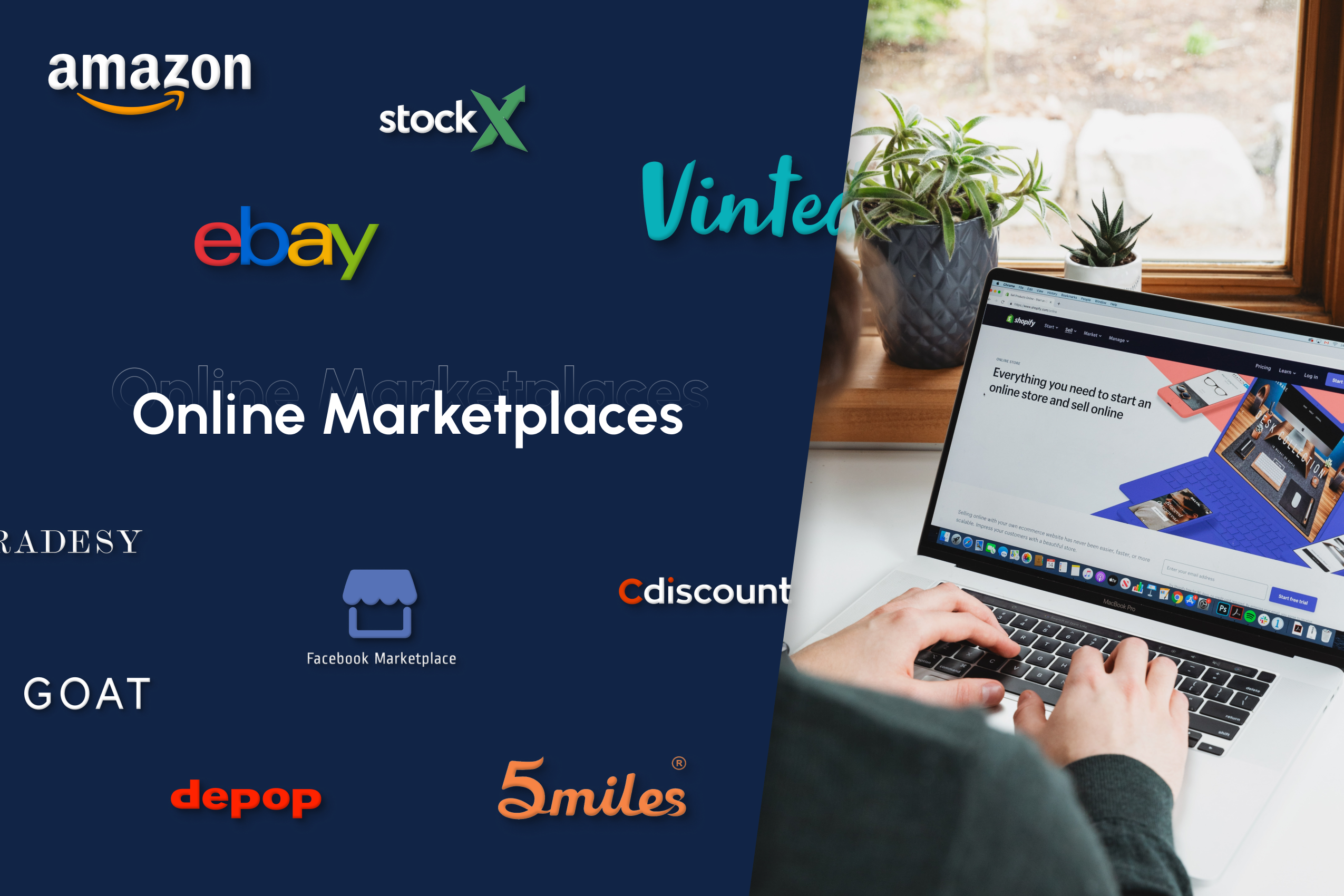
Now you know everything there is to know about online marketplaces you need to pay attention to. Whether you’re a small reseller or a seasoned professional, selling online can be an intimidating process but hopefully, the tools and information covered here make it seem less overwhelming.
Contact us today if you need support with your online business and are looking to grow your sales further or even get set up. One of our team will reach out to set up a call and discuss the support you need.
Subscribe to our posts
This page requires cookies to give you the best possible experience. Read our Cookies Policy to learn more.
This page requires cookies to give you the best possible experience. Read our Cookies Policy to learn more.
Comments